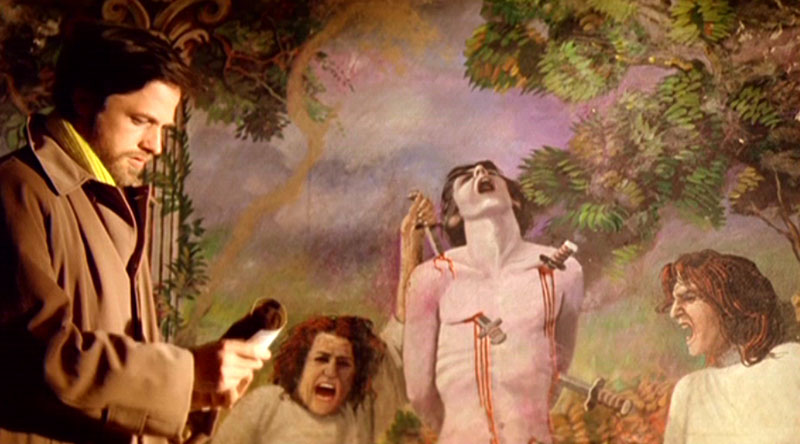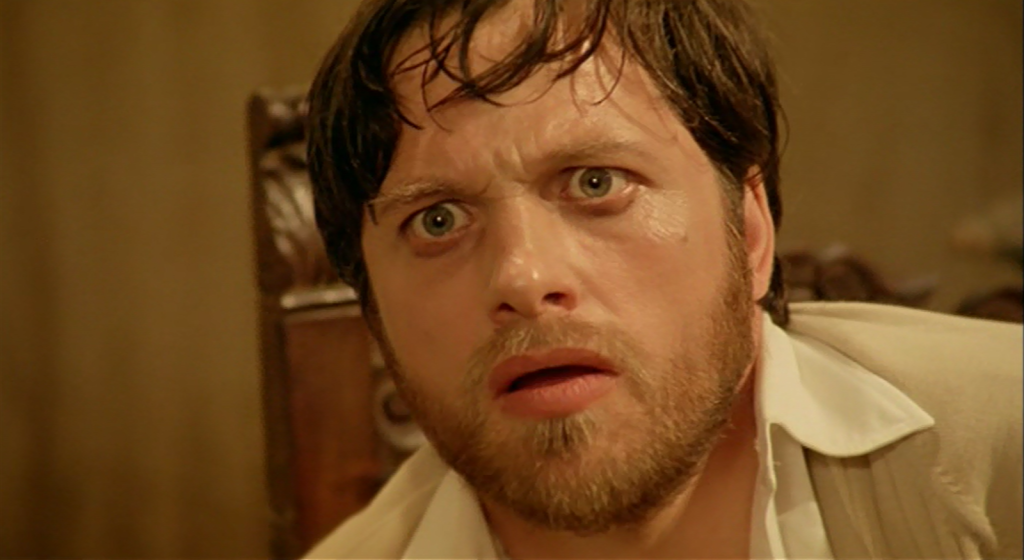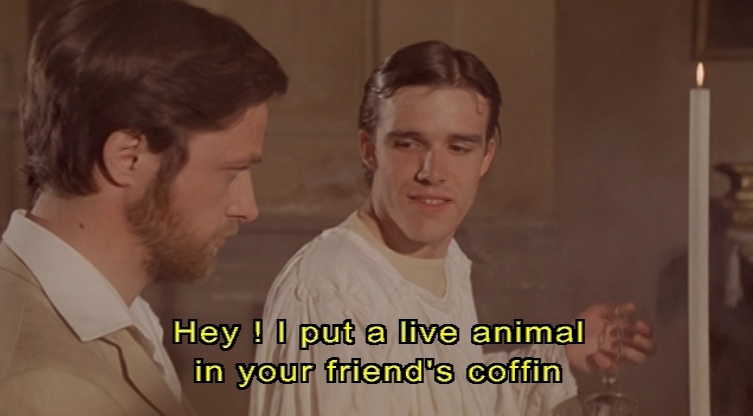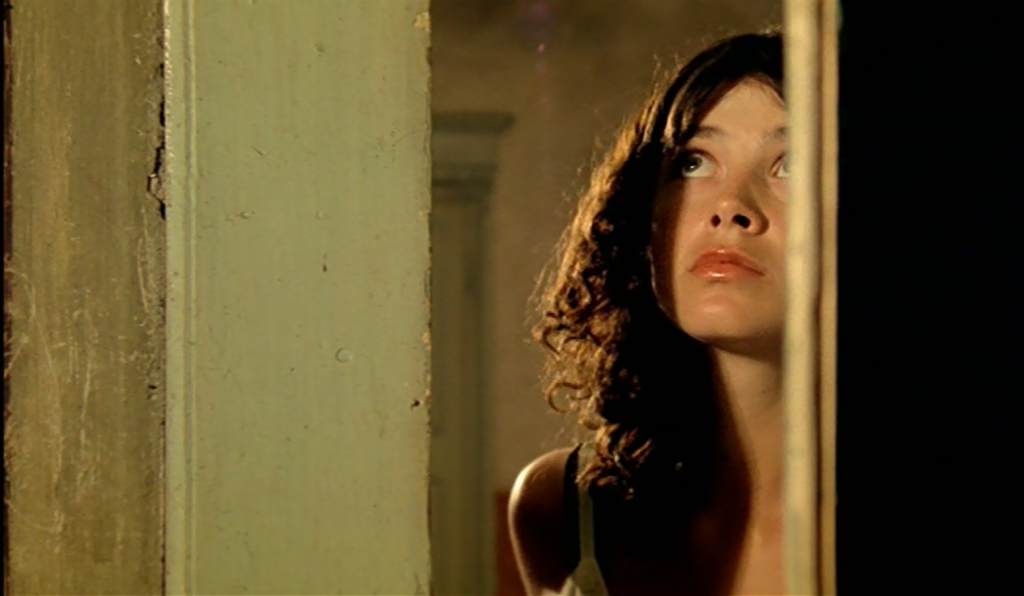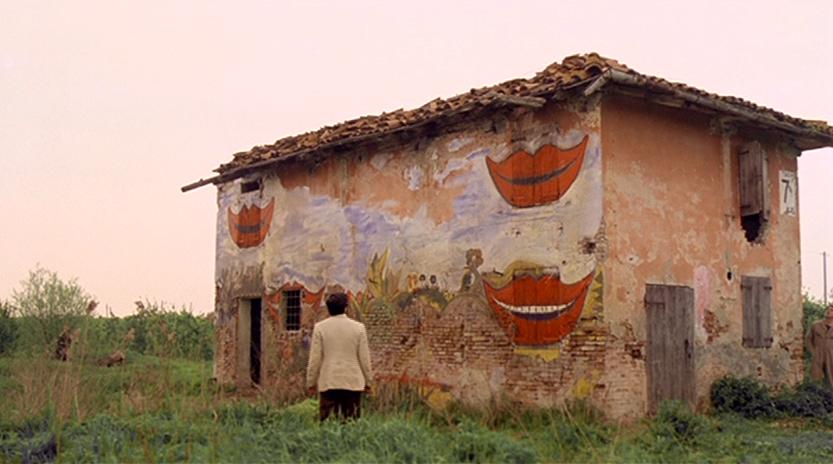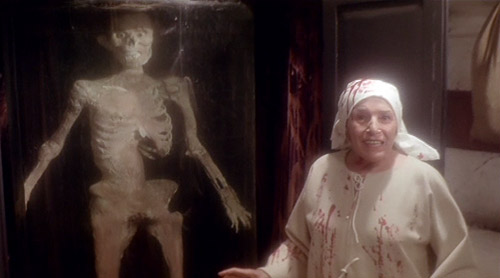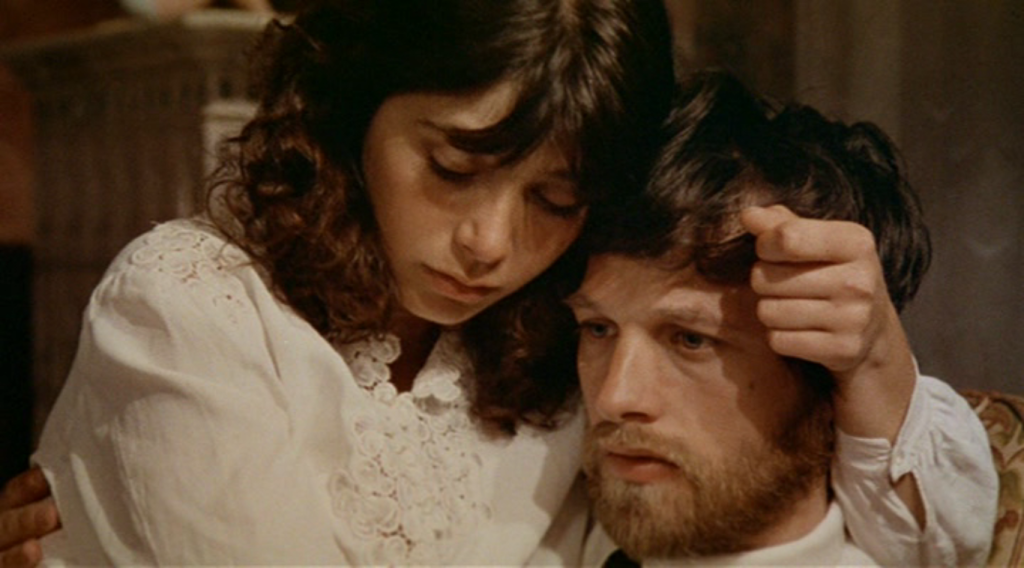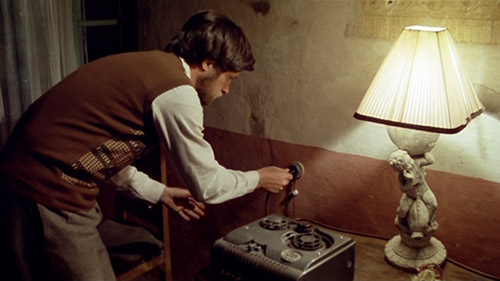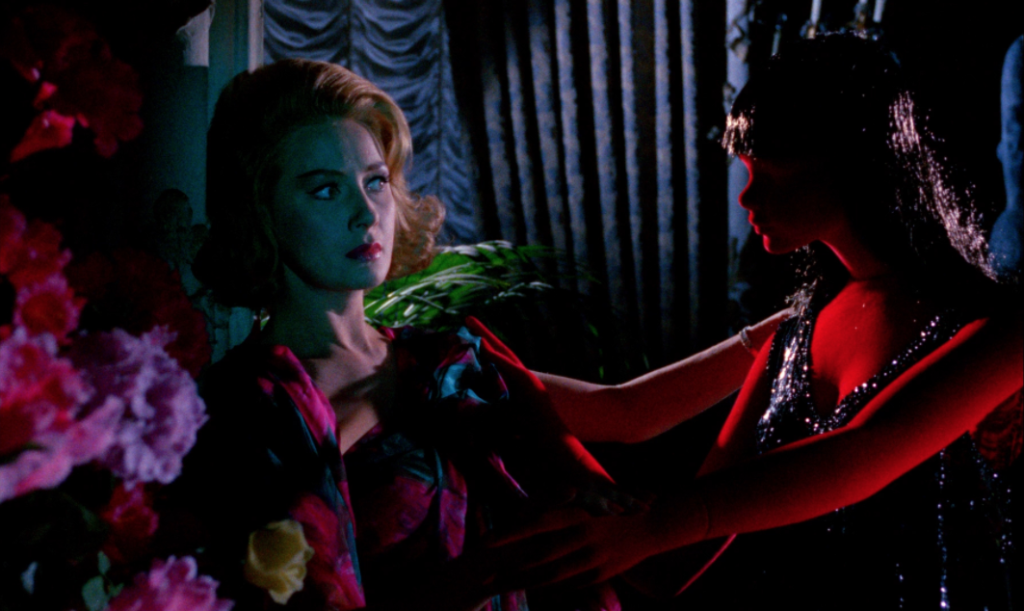
This January, in support of the Toronto Rape Crisis Centre / Multicultural Women Against Rape, friends and family have raised over $1,500 (which, when matched by my employer, totals $3,000). As a result, I now have to watch and write about thirty-one horror movies: one each night. Any donors who contributed over $30 were given the option to choose one of the horror movies I must subject myself to. After each viewing, I will write some things about said movies on this website. Be forewarned that all such write-ups will contain spoilers, and many of them will refer to unpleasant and potentially triggering situations. Today’s film is the Italian giallo film that launched a thousand slashers, Blood and Black Lace (1968), directed by Mario Bava (Danger: Diabolik, Black Sunday). I viewed Blood and Black Lace via YouTube.
What happens:
Trigger warnings: Violence against women, suicide.
What happens:
Blood and Black Lace is often considered one of the first of a category of Italian horror films called giallo: essentially, very stylish detective stories that feature gruesome murder set pieces (often of beautiful women) at their centre. Bava’s film set the tone, with a technically dazzling series of murders set within fashion salon. The film’s introduction cleverly introduces the actors in brilliant Technicolour (even the mannequins are a bright red) over a hot jazz soundtrack.
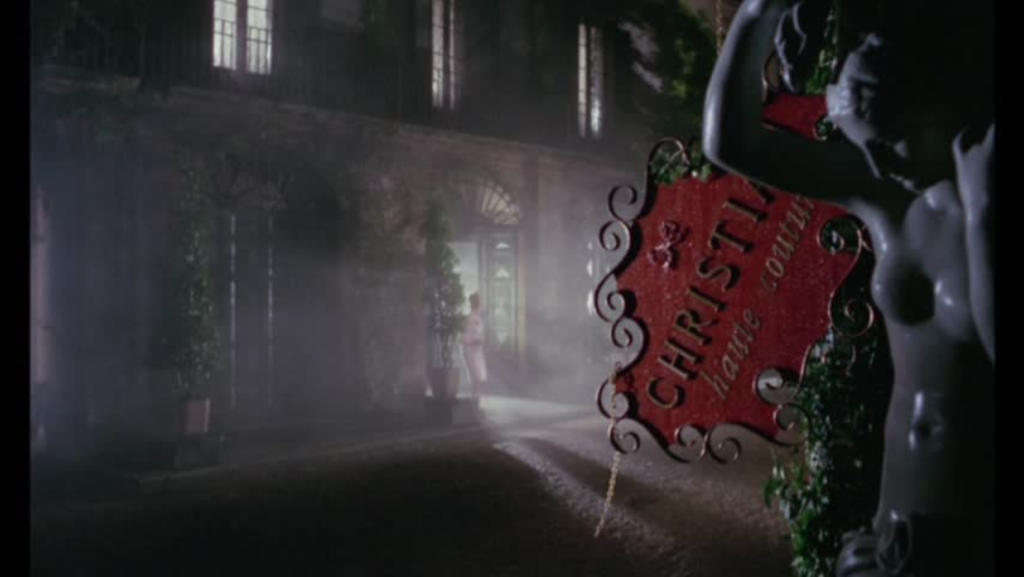
’Twas a dark and stormy night at the estate of Christian Haute Couture – so stormy, the sign blows down. Franco Scala (Dante DiPaolo), a fine antiques dealer, skulks the estate grounds and beckons Nicole (Ariana Gorini), a model with the fashion line, to see him. They obliquely discuss scoring some drug and fret about not alerting fellow Isabella to their relationship. Franco leaves and another employee of the fashion salon, Marco (Massimo Righi) attempts to repair the sign to no avail. The aforementioned Isabella (Francesca Ungaro) arrives soon enough, in a red vinyl jacket. She travels down the stairs and through the corridors of trees, stalked by a masked man in a trench coat and fedora. He wears a beige stocking over his face, making him look like The Blank in Warren Beatty’s Dick Tracy film.
The masked killer leaps from behind a tree and violently strangles Isabella. The scene is rough to watch, with Isabella scratching her face on the tree. Once he’s killed her, the murderer drags her body away. Inside the estate, the team is preparing for a fashion show. Marco, looking haunted, pulls at his collar like Rodney Dangerfield in a sauna and finds a private place to pop some pills. Countess Cristiana (Eva Bartok), matriarch of the company, complains about Isabella’s lateness to Massimo Morachi (Cameron Mitchell), the managing director. Cristiana, we learn, inherited her late husband’s company after his death. The Countess opens an armoire and finds a ghastly surprise inside: the dead body of Isabella!
Police, led by Inspector Silvestri (Thomas Reiner), arrive and question Morachi. Morachi says he’ll need to speak with “the girls” and introduces him to Cristiana, but they’ve already met. The Inspector and she spoke when her husband had his tragic car accident. The inspector begins to speak to some of the other models when the cops suddenly drag in a man who was prowling the grounds. Greta (Lea Lander), one of the models, identifies him as her fiancée, Riccardo Novelli (Franco Ressell). He was coming to pick her up. Isabella, we learn, lived with her model colleagues Peggy (Mary Arden) and Tao-Li (Claude Dantes). Just as Silvestri begins to interrogate them, the fashion designer, Cesare Lazzarini (Luciano Pigozzi), a real Peter Lorre type, says that the cops should speak to Isabella’s lover, antiques dealer Franco Scala.
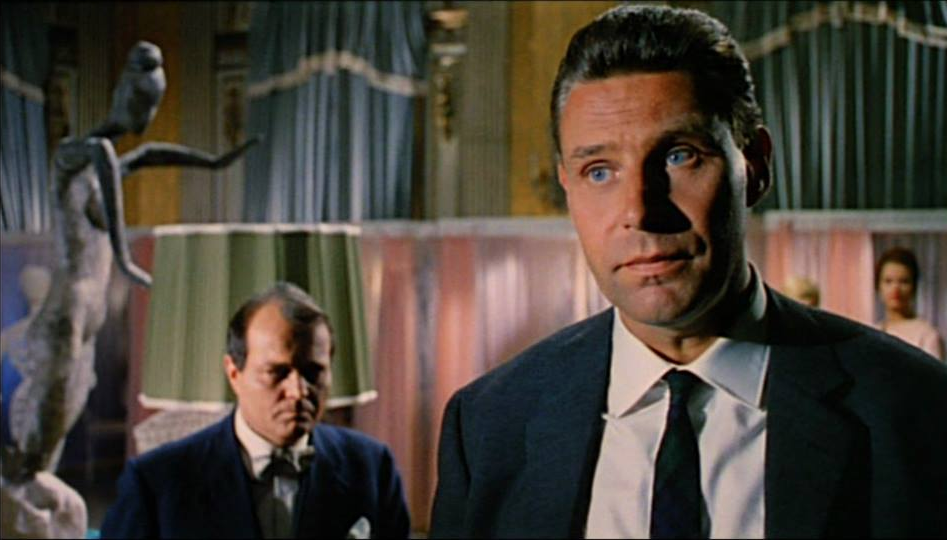
The police pay a visit to Scala’s shop. They break the bad news to him about Isabella – he doesn’t seem overly upset – and then dangle a packet of cocaine in front of his bloodshot eyeballs, knowing Scala is a user. They say it was found at Isabella’s, but if Franco Scala knows something about her death, he doesn’t let it slip. The fashion show happens shortly thereafter, and the salon encounters a dilemma: who should wear the clothes that Isabella was to wear? No one particularly wants to do it, but Nicole agrees to make the sacrifice. Marco scurries around a corner to take some more pills and Nicole returns, positively stunning in Isabella’s haute couture. But she needs a brooch to complete the look. Everyone goes through a number of boxes on the table to find it, and discover a red diary – presumably Isabella’s.
Nicole immediately begins to recite the lurid details within, but the Countess reminds her they have a fashion show to wrap. Nicole stops and says she’ll deliver the diary to the police as evidence following the show. But during a break, she calls Franco and tells him that (a) she’s scored some coke, and (b) she found Isabella’s diary. The downside is that everyone now knows the diary exists. During this phone call, a shadow is seen eavesdropping in the background. Franco says he’ll come right over. Yet moments later, Franco calls back to say he’s too ill, and that Nicole should come to him at the store.
Nicole asks to borrow Peggy’s car and she agrees, giving her a quick lesson on how to deactivate the car alarm. Nicole leaves the fashion show partway through and drives over to the antiques shop, lit in vivid reds and purples. The place is completely dark, and Nicole can see no sign of her clandestine lover, Franco. Then dressers and other pieces of heavy furniture begin to plummet from the floor below. Realizing someone is trying to kill her, Nicole runs from the unseen enemy. But the killer (in his mask and fedora) grab her, ripping off her top. She manages to break free, but struggles with the lock on the front door. The killer then topples a suit of armor onto her, and tackles her from behind. Seizing an inexplicably clawed gauntlet from the armor, he drives the spikes into her face, killing Nicole.
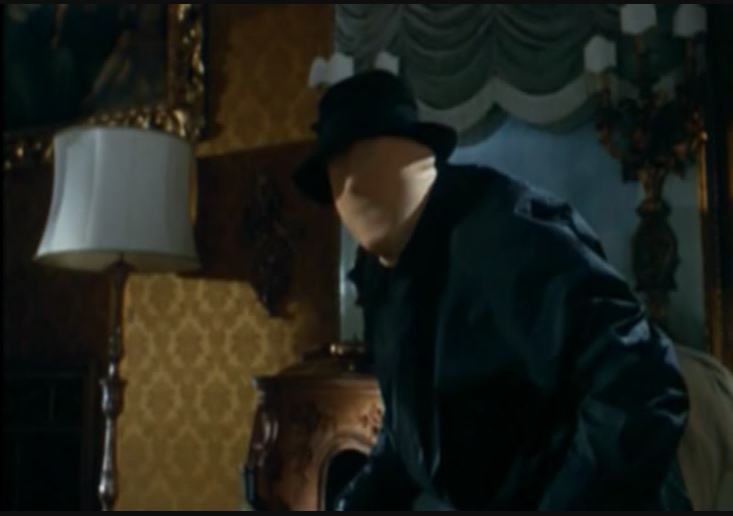
Our murderer frantically searches through Nicole’s purse, but can find no sign of the diary. In his failure, he steals the car keys and drives away. (Notably, he is able to disable the alarm in just a couple seconds.) A gas station attendant sees the car racing away and jots down the licence plate. Peggy, meanwhile, has been dropped off at her apartment by her roommate, Tao-Li, who continues on to an evening engagement. As soon as Tao-Li’s ride departs, Marco appears and asks to (really insists) accompany Peggy to her apartment. She acquiesces, but seems exhausted by Marco. They greet the house servant, Clarice (Harriet Medin), who has started a roaring fire. Once she departs for the night, Marco (again) confesses his love for Peggy. He can’t understand why she doesn’t care about him; it makes him ill. Luckily, Peggy puts Marco’s whining to a stop when she asks him to leave. Her night is then interrupted by a call from the police: Peggy’s car has been found abandoned, with Nicole nowhere in sight!
Peggy then opens her handbag and reveals that she has stolen Isabella’s diary. She flips through it to find the pages that concern her: apparently Peggy had been stealing money from Isabella to help her abort an unwanted pregnancy – a real scandal! She tears out the offending pages and throws them into the fire, then decides to toss the whole thing upon the flames.
The doorbell rings and Peggy responds, but she’s ambushed on her front step by the fedora killer. He drags Peggy back inside the apartment. When she bites his hand, he backhands her, sending her sprawling into a book case. Then, in an impressive feat of strength and coordination, the killer strangles Peggy while managing to remove a leather notepad from his pocket and write – all with one hand! – a note in German: “Where is the diary?”
Peggy screams that she burned it, so the masked man drags her over to the fireplace for a closer look. While he pokes about in the ashes, Peggy leaps over the couch to grab her telephone. Well, the killer doesn’t like that one bit, and knocks her around the room as punishment. A police siren sounds outside, and the killer drags Peggy out of her apartment and up the stairs. When the Inspector arrives, he finds an abandoned woman’s shoe and the signs of a struggle all over. But no sign of Peggy.
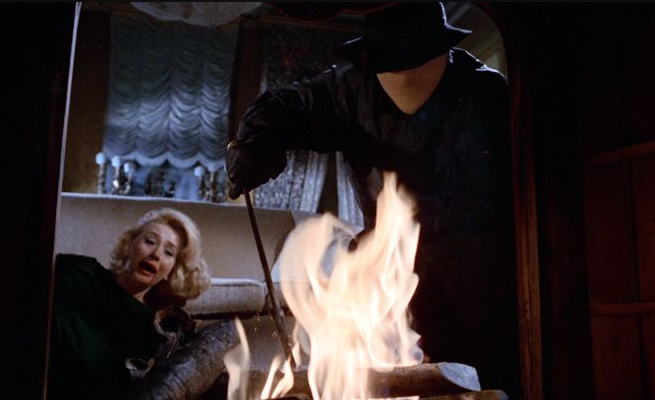
On the edge of town, Franco arrives at the house of Riccardo and Greta and tells them horrible news: he’s found Nicole’s body in his shop. But he can’t tell the police without an alibi: he and Nicole were having an affair, and suspicion will naturally fall upon him. He insists that Riccardo and he say they were in each other’s presence – they can each provide an alibi for the other. Riccardo doesn’t know why he’d agree to do such a thing, so Franco reveals that Riccardo was flat broke and owed Nicole a ton of money: yet another good motive for murder. They agree to vouch for one another.
Meanwhile, in a secret location, Peggy has been blindfolded and bound to a chair beside a hot stove. (This doesn’t bode well.) Fedora Man approaches her in this dungeon-like hideout and removes her blindfold. Peggy insists that the diary has been burned, but the killer just slaps her around some more, then escalates, forcing her hand onto the hot stove. The result is a gruesome burn. In the ensuing struggle, Peggy pulls off the killer’s mask, catching a glimpse of his face. To maintain his secret identity, the killer grabs Peggy’s head and forces her face onto the stove. (You’d never catch Clark Kent doing that.)
Inspector Silvestri returns to the shop to interrogate Franco literally over Nicole’s dead body. He knows the two shared a drug habit and knows Franco was cheating on Isabella with Nicole, but Franco protests that it doesn’t make him a murderer. The Inspector agrees, and questions the gas attendant outside, who tells him the driver of the getaway car wore a mask and seemed to know how to easily deactivate the car alarm. Silvestri hauls the usual suspects into the police station – and by “usual suspects,” he brings in literally every man connected to the fashion salon. He then brings in Peggy’s maid, Clarice, to ask which of the assembled men had driven in Peggy’s car (and thus, would know where to find the alarm). Unfortunately, they all have.
The suspects begin to turn on one another. The twitchy Marco accuses Cesare of being impotent, and, thus, eager to kill all women. (Seems a stretch.) But Marco becomes so agitated that he experiences what appears 100% like a panic attack, but is revealed to be epilepsy. Riccardo and Franco point out they both have alibis, but the Inspector notes that Peggy is currently missing, and none of them have alibis for that. He decides to hold them all overnight for further questioning.
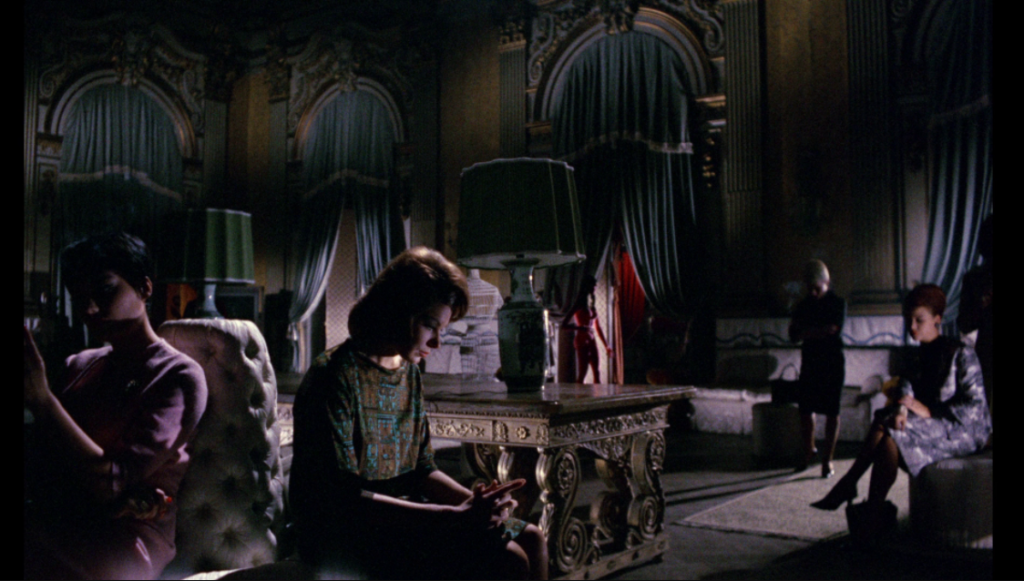
The surviving women of the fashion house sit in the estate’s large foyer (in the complete dark, for some reason) and some begin to panic. The Countess Cristiani receives a call on the room’s red Bat-Phone from Morachi who informs her that all the men have been detained. Three of the female employees head out to their apartment together, which leaves Greta to drive to her remote home alone, with her fiancee Riccardo in jail. She begs Tao-Li to stay with her, but Tao-Li refuses and returns to her apartment (which is currently an active crime scene!). Greta then asks Cristiana if she can stay at work, but the Countess isn’t having it: “Don’t be a baby!” She suggests Nicole and Isabella died because of their “dangerous lifestyle,” and she has nothing to worry about. (Talk about minimization of feelings!) So Greta must drive shome alone, and she’s not even that good a driver – she backs into a tree on her way out.
When Greta arrives, her servant – everyone in Italy has a servant, I guess – greets her and tells her what we already know: Riccardo has been detained. He leaves to fix her some tea and Greta makes a grim discovery: Peggy’s body was secreted in the boot of her car. Peggy’s burned face looks up at her with dead eyes. Instead of telling her servant, she drags Peggy’s body to her room and hides it poorly behind a folding screen to not arouse suspicion. She changes into her lingerie and we see Greta’s head – clearly visible beyond the screen’s border – slide out of view. When Greta returns to check on Peggy’s corpse, she’s surprised by the killer, who smothers her with a couch cushion.
When the police arrive at Greta’s, they find two women’s bodies and realize they are dealing with a madman – a madman with a vendetta against beautiful women. However, all their suspects were in custody, so none of them could have killed Greta: back to square one. The suspects are released, but as Morachi is returned his personal effects, the camera lingers on his very distinctive notepad. A notepad we’ve seen used (very adeptly) before. When he returns to work, Tao-Li asks to take a vacation to Paris; with a sex maniac running around, she’d rather not stick around town. Morachi is happy to grant her the time off, but asks if she’s still living in the Countess’s house. She is. He notes he used to visit the Countess and Christian frequently when they were together (and alive).
Once Tao-Li leaves his office, Morachi opens a secret corridor behind his bookcase, Scooby-Doo-style, and descends into a dungeon. He begins to poke around a furnace until Cristiana, the Countess, arrives and tells him she incinerated it. (Though I’m unclear what, exactly, she burned.) The two then kiss, and their scheme is explained: Morachi and Cristiana were in cahoots. Morachi began the killings, and Cristiana picked up the slack while he was briefly imprisoned. See, Isabella had been blackmailing the two of them for years, since she witnessed them kill Cristiana’s husband, the founder of the company, and make it look like an accident. The killing would have stopped with her, had not her diary (with all its secrets – including the murder of the Countess’s husband) come to light.
Morachi, however, is not ready to chill just yet: he’s convinced the police won’t let four murders go unsolved. They need to find a patsy . Cristiana, he commands, must kill one more person and make it look like they were the culprit. Cristiana cries at the thought of murdering again, but Morachi (her lover) slaps her, and she agrees. Tao-Li will be their next victim.
There’s not much preamble to the next murder: it’s a smash cut to Cristiana (in her mask and fedora) drowning her former employee in a full tub. Once Tao-Li croaks, Cristiana takes off her mask and, with tears running down her face, takes a straight razor and slashes Tao-Li’s wrists to make it look like a suicide. That’s when someone rings the doorbell and begins to bang powerfully against the door.
Cristiana panics! Who would come looking for Tao-Li? The viewer knows, for the camera reveals it is her love and partner-in-crime, Morachi, at the door. Racked with anxiety, Cristina goes out the window and climbs alongside the building. But when she grabs onto a rusty drainpipe, it breaks from the wall and she plummets to her doom.
The camera pans around the beautiful colours of the empty fashion studio. Morachi is busy in the office, attempting to unlock a green box. He succeeds and begins to paw the precious necklaces inside. Then he hears a creak in the foyer, so leaves to investigate. When he returns, the necklaces have gone! From the shadows emerges Cristiana, a little worse for wear and bleeding profusely from her head, but alive. She survived the fall.
Our Countess realizes her lover set her up – he got her to dress up as the killer, then scared her so she’d go out the window and fall to her death. That’s why Morachi wanted to marry her in secret – and so quickly, too! To collect her riches after her death. Morachi tries to reason with her and pulls her into his embrace. Then two gunshots sound. The lovers part, and it’s clear Morachi has been killed. Cristiana collapses onto his dead body and, using the red Bat-Phone again, calls the police and asks for Inspector Silvestri. The final shot zooms in on the red phone swinging back and forth.
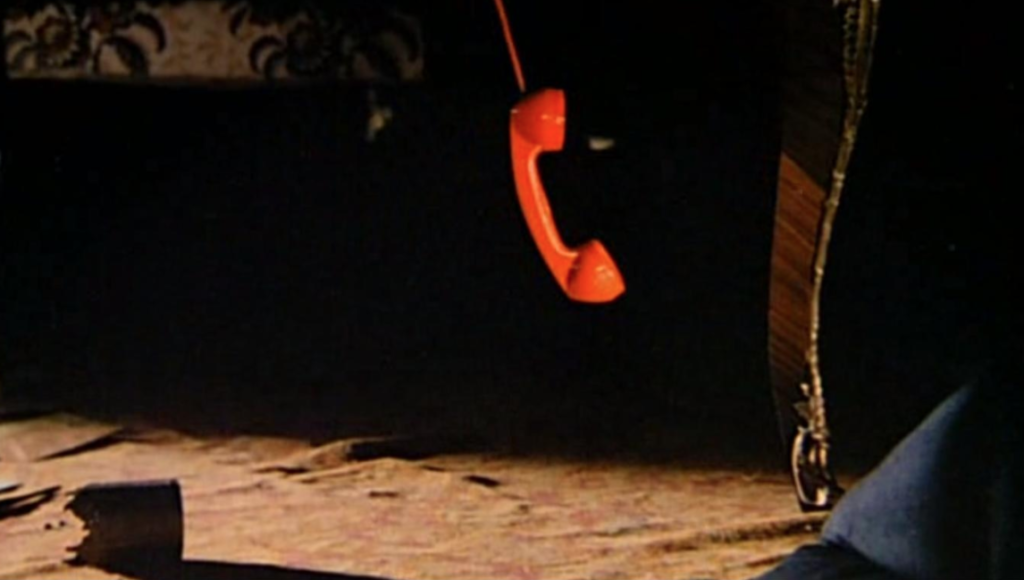
Takeaway points:
- Blood and Black Lace, like many of the gialli that would follow, is a very beautiful case of style over substance. There is not much to this film: a bunch of women die in horrible ways. Yes, there’s a mystery, but if you didn’t know the Countess was involved from the get-go, I don’t know what to tell you. The reason to watch is the vibrant colours and the elaborate efforts put into the stalk-and-kill sequences. It’s fitting that this film takes place in the world of fashion. Because, here as there, style is everything.
- Often, gialli – and their mutant American children, slasher films – are criticized for glamorizing and revelling in violence against women. Of course, most horror features violence against all genders, but the giallo features a particular type of sexualized violence: one that fetishizes death and eroticizes death, all black gloves and plunging necklines, even if the murders themselves (as in this film) have no sexual element. Yet even outside of the murders, violence against women is casual in the movie. The killer often slaps his female victims around before coming up with clever ways to kill them. Even male lovers are shown to hit women on a whim – there’s a lot of casual slapping in this film. Of course, there is the question of whether the film is misogynist or depicts a misogynist world, and that can really depend on the particular giallo and the characters and events within. With Blood and Black Lace, the imagery is so beautiful and the viewers (you and me) so complicit in the horrible deaths, Bava seems to be turning the tables on us. Am I a misogynist? What about YOU? You’re the one watching the film. And enjoying it. Well, I only half-enjoyed it, Mario.
- One question that ran through my mind whenever model Tao-Li appeared on screen: is Tao-Li supposed to be Asian? Her name certainly reads as Asian, but Claude Dantes, no matter how they style her, is definitely not. Troubling.
Truly terrifying or truly terrible?: Blood and Black Lace is not so much scary as it is grim. We just watch as woman after woman is violently killed, so while it’s undoubtedly disturbing, scares are few and far between. However, it’s worth watching for the incredible colour palette and compositions.
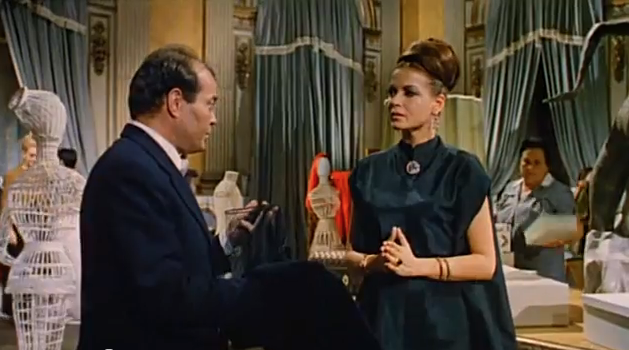
Best outfit: Given Blood and Black Lace concerns a fashion salon and the models and designers within, there’s a lot of high fashion on display. My favourite is the black sleeveless thing Cristiana wears to the fashion show: sort of a mourning cape.
Best line: “Perhaps female beauty makes him lose his head and kill.” – a police deputy, summing up, like, every giallo film ever.
Best kill: None of the murders in Blood and Black Lace have the fun feel of a good old-fashioned slasher. They’re kind of torture-ish and make you want to take a shower afterward. (This feeling is worsened when you view the film at one int he morning.) But I’d be lying if I didn’t admit how the masked killer used a claw gauntlet from a suit of armor – something I can’t imagine really exists – to kill Nicole wasn’t both hideous and impressive.
Unexpected cameo: The gas station attendant is played by Enzo Cerusico, who was the star of the short-lived 1969 television series, My Friend, Tony
Unexpected lesson learned: Never trust someone who calls you a ‘baby’ for not wanting to be alone when a serial killer has murdered two of your co-workers in as many days. And never trust a man in a fedora, but that lesson seems obvious.
Most suitable band name derived from the movie: Wo ist den Tagebuch?
Next up: Inside (2007).
